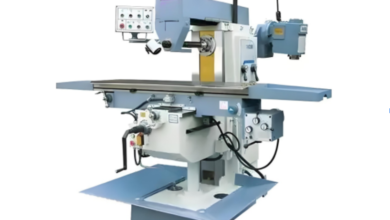
How Smart Spending Tools Are Reshaping Modern Businesses
For a long time, managing company finances felt like walking through fog. There were spreadsheets you had to squint at, expense reports that looked like puzzles, and cards that felt more like walls than gateways. The landscape was filled with limitations, not possibilities. But quietly, and without much noise, a shift has been happening.
Modern businesses, whether they’re five-person creative studios or scaling tech companies, are beginning to demand more from the tools they use. Not just in terms of security or compliance, but in the way these tools fit into their daily rhythm. Spending, after all, isn’t just about numbers. It’s about people, priorities, and pace.
1. The new relationship between businesses and money
What is evolving is not only the mechanics of how money moves, but also the underlying reasons and timing behind those movements. In an environment shaped by distributed teams, accelerated growth cycles, and a growing emphasis on financial transparency, the concept of business expenses has fundamentally shifted. It is no longer confined to traditional reimbursement models or predefined credit limits. Instead, the focus has moved toward establishing systems that enable employee autonomy while maintaining organisational oversight. The goal is to streamline operations without compromising accountability.
2. Why does a Business Debit Card work the best?
There’s something elegant about simplicity. Debit-based systems don’t rely on lending; they rely on clarity. You can’t overspend. You know what’s available. And more importantly, so does your team. An Aspire Debit Card, for instance, is often preferred by businesses looking for better control over cash flow. These kinds of cards are particularly useful for companies that move quickly but want to stay grounded. In industries where agility matters, such as marketing, SaaS, and e-commerce, speed is an asset, but so is foresight. Having a financial tool that updates in real time, with no surprise charges, makes day-to-day operations smoother.
3. Empower your team to spend right.
One of the most underestimated shifts in today’s workplaces is the emphasis on trust. Employees are no longer just executors; they’re decision-makers. And giving them access to company funds in a controlled, visible way reflects a deeper confidence in their judgment.
Old models were built on approval chains that created bottlenecks. Today, a well-designed financial system should allow for autonomy with accountability. The right spending tool doesn’t just prevent misuse; it encourages smarter choices. And that changes culture from the inside out. Think about a marketing manager who no longer has to swipe their personal card for ad spend, or a project lead who can book travel without waiting three days for a supervisor’s sign-off. The shift isn’t just functional; it’s a need of the time.
See also: Why Homeowners Rely on Main Line Plumbing: Premier Plumbers in Rochester, NY
4. Integration over isolation
In the past, financial tools worked in silos. Your card lived in one dashboard, your budget in another, and your reporting tool in a third. Now, businesses are choosing systems that talk to each other.
Imagine this: a transaction is made, it’s auto-tagged, logged into the accounting software, matched with the budget line, and flagged for review if something seems off. All without anyone needing to file or flag manually. This kind of seamless backend work saves hours and, more importantly, reduces stress. Financial clarity should be ambient. You shouldn’t have to chase it. And that’s what modern business tools are starting to provide.
5. How teams are actually using this freedom
It’s not just the finance teams that benefit. When spending tools are well-designed, everyone breathes easier. The design lead can sign up for a new prototyping tool without waiting three days for a wire transfer. The content strategist can run a quick paid campaign without touching their own wallet. The founder can get a birds-eye view of team spending, not as a spreadsheet of chaos, but as a pattern they can understand.
And these aren’t just conveniences. They’re part of what makes a modern team function with confidence.
6. Quiet tools, loud impact
Not every game-changing tool makes a splash. Some just work so well in the background that you don’t notice them, until you realise how much smoother things have become.
The Aspire debit card, for example, is part of this quiet toolkit. It’s not about branding or flash. It’s about giving businesses a simple, clean way to move money and to understand where that money is going. There’s relief in that. Not just for the CFO, but for every person whose day used to be filled with tedious approvals, mismatched receipts, and awkward reimbursements.
7. Final say
Ultimately, smart spending is about more than just tech. It’s about values. It reflects how much a business trusts its people, how ready it is to adapt, and how seriously it takes financial clarity. In a fast-moving world, the most powerful tools aren’t always the loudest. They’re the ones that make space for better decisions, for calmer workflows, for stronger teams. Financial systems should feel like a well-laid foundation, not a maze. And when they do, they don’t just support growth, they make it sustainable.




